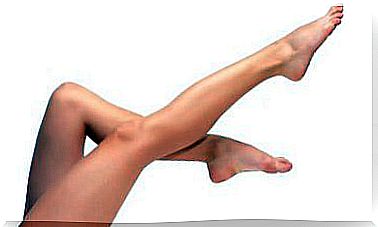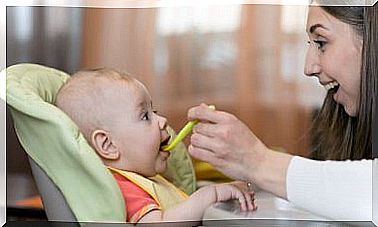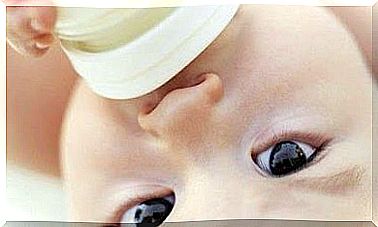Dermatophagia In Children: What Is It And How To Treat It?

No two children are alike, and there is no specific personality type considered normal and appropriate. Some children are calmer and more carefree, while others are more nervous and energetic.
If your child is in the second group, you may be ignorant of certain risky behaviors as they may be typical manifestations of your restless personality. This is the case of dermatophagia, the subject of this article.
We all know children, and even adults, who regularly bite their nails. This habit is relatively widespread and normalized in our society and therefore we do not attach much importance to it.
However, biting your nails is just one of the many ways in which difficulties in dealing with anxiety or worry manifest themselves. Dermatophagy is another one of them. Knowing what’s behind this will help us provide our children with the help they need to stop this type of behavior.
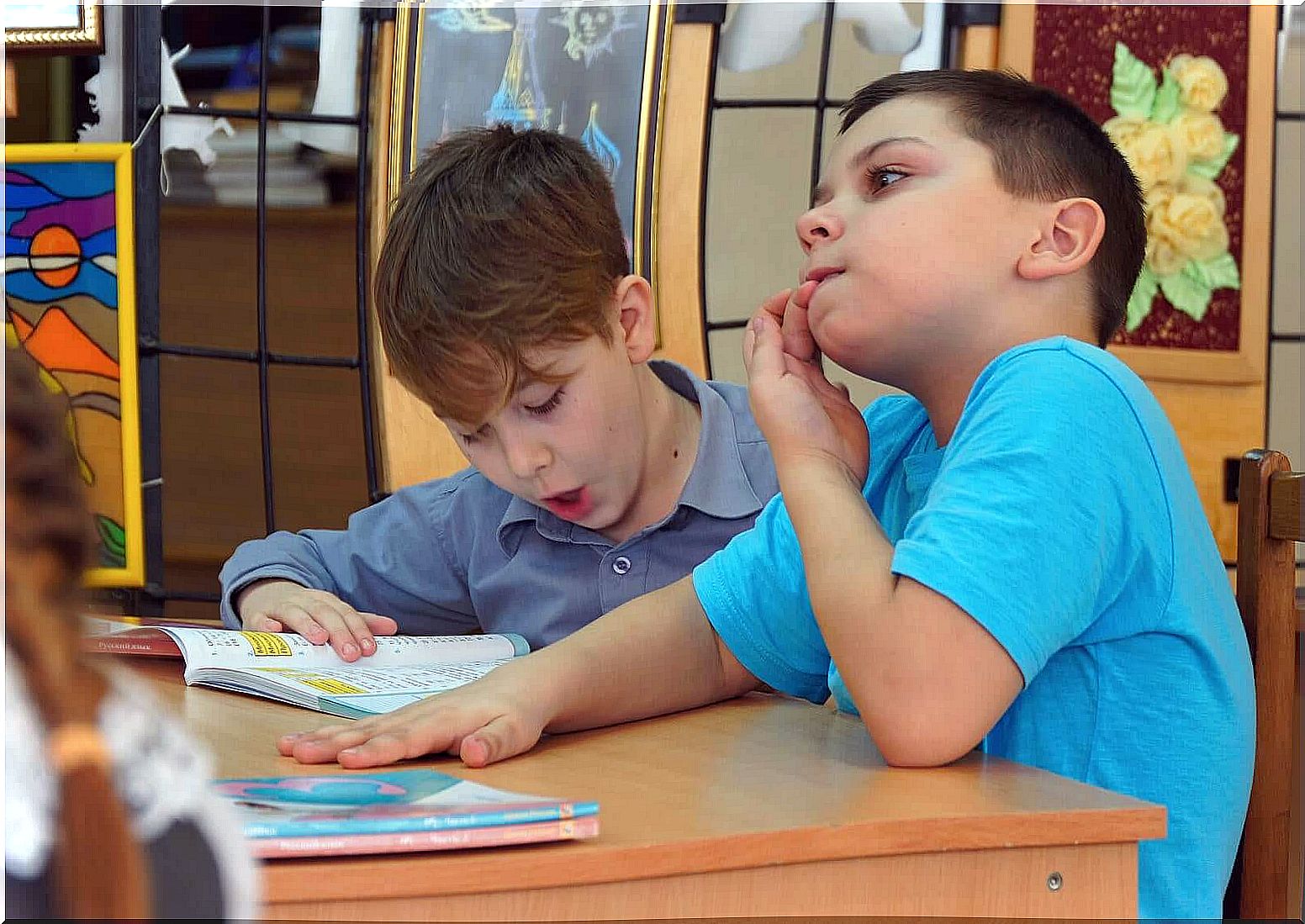
What is dermatophagia?
Dermatophagy is the act of chewing one’s own skin over and over again. In general, children with this problem often chew the skin on their fingertips or around the cuticles, although they can also chew the inside of their cheeks or the skin of their lips.
As a result of this act, several lesions appear, such as ulcers or bleeding and reddened wounds that worsen over time. It is common that, after some time with dermatophagia, these children have their fingers “raw”, which will be a warning sign for parents.
Why does it occur?
By contemplating the wounds on their children’s skin, parents will not be able to understand why they resort to behavior that seems so harmful and painful. Therefore, it is necessary to understand the mechanism behind dermatophagia.
First of all, we must say that it is a nervous habit. It occurs more often in children with an anxious personality or who suffer from an anxiety disorder, such as generalized anxiety disorder (GAD) or social phobia. However, it can also originate from a specific episode in the child’s life that caused anxiety.
We can compare the sensation these little ones experience to what we feel before sneezing, that itching or discomfort so irritating that it is only relieved by sneezing.
Something similar happens in this case: the child feels a growing restlessness that disappears when chewing the skin, a moment in which there is great relief and a pleasant and pleasurable sensation. This is why it can be so difficult for children to resist the urge to continue doing this act.
On the other hand, dermatophagia works as a tool to deal with anxiety. While chewing their fingers or cheeks, nervousness temporarily diminishes, so children become accustomed to self-regulating in this way.
The problem is aggravated when this becomes a habit and the child starts doing it not only when they are anxious, but also at other times, such as when they are bored or distracted, so the behavior has already become something that she’s not even aware of.
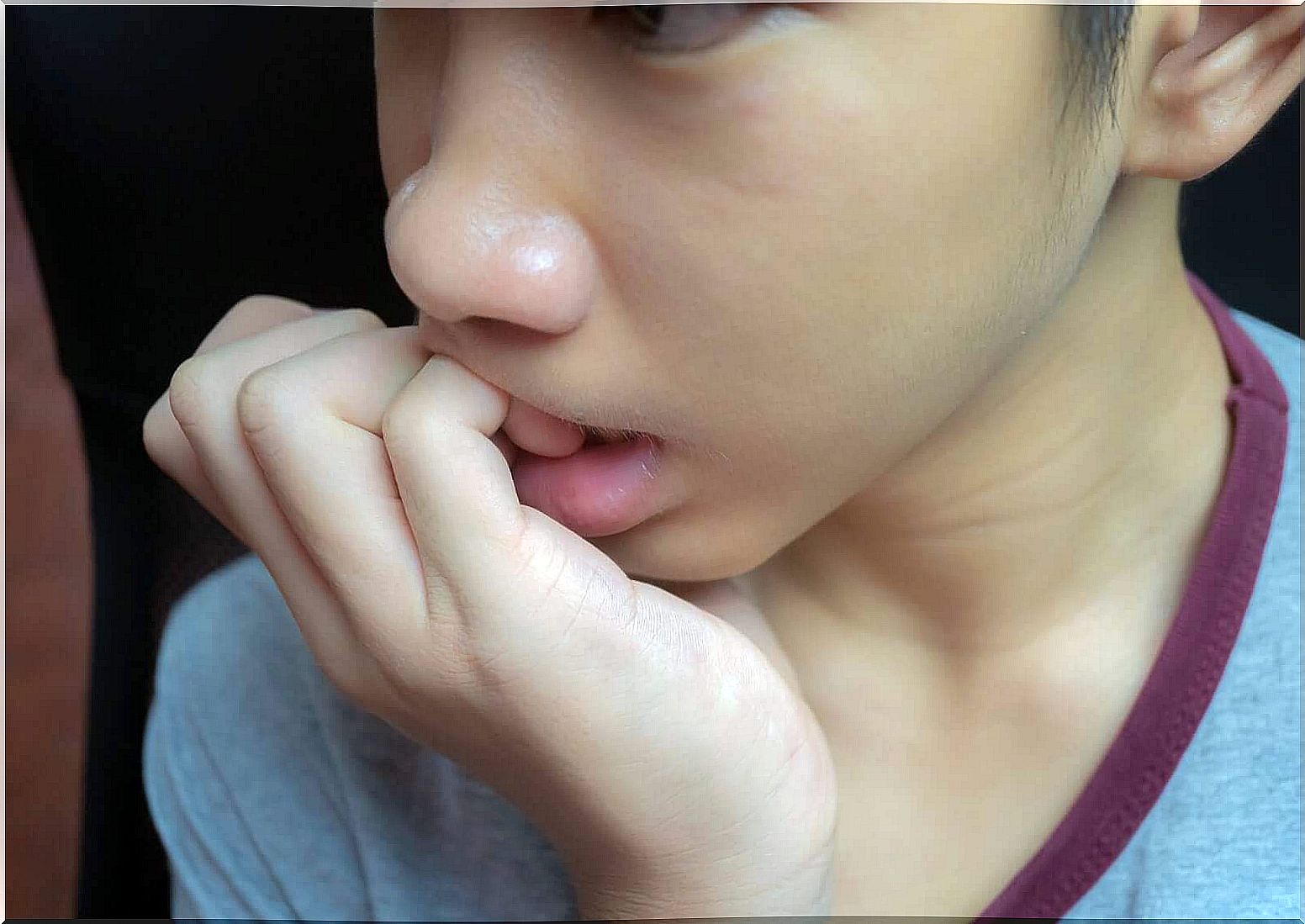
How to treat dermatophagia?
If you detect that your child is suffering from dermatophagia, you need to act on it. First, to prevent it from continuing to damage the skin, and second, to teach healthier and more effective coping strategies. Thus, on the one hand, it will be necessary to understand whether the anxiety that triggered these behaviors is generated by an isolated episode or by a disorder itself.
As we said, perhaps the child may suffer from generalized anxiety or perhaps there is a problem at school that has increased their anxiety in a timely manner.
To combat this problem, we can teach techniques to regulate activation, such as breathing or relaxation exercises. Likewise, it will be necessary to offer problem solving tools so that the child does not feel overwhelmed by the circumstances they encounter.
However, in addition to this, the most effective technique to treat dermatophagia directly is reversing the habit. Thus, the child will be trained to perform an incompatible behavior whenever he detects the urge to chew the skin.
For example, she can sit on her hand for a few moments, until the impulse disappears. In any case, it will be necessary for a child psychologist to assess the specific case and apply the most appropriate treatment.
